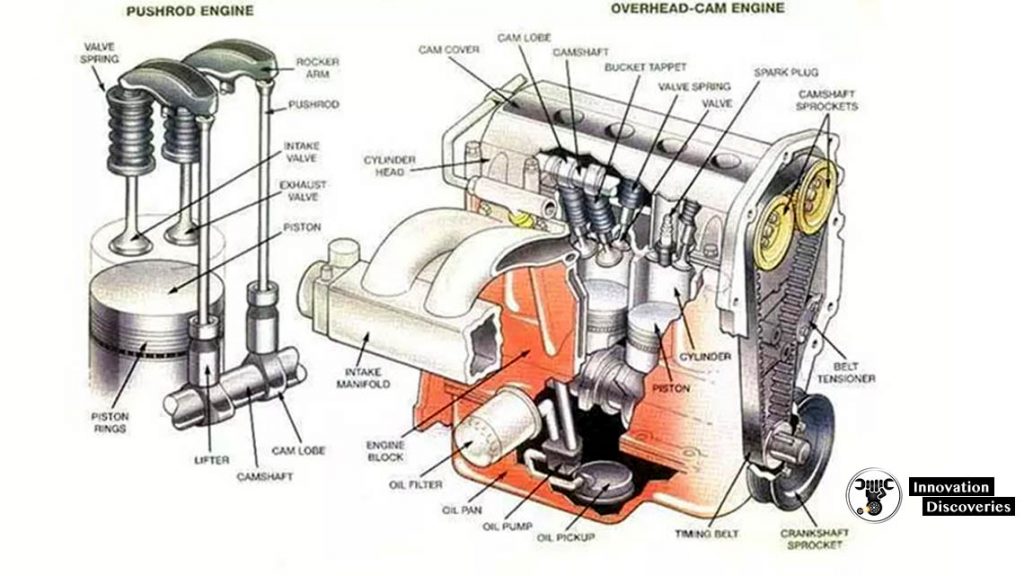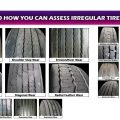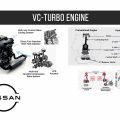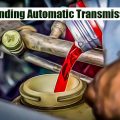
The main function of the valve train, as indicated by its name
Is to control the opening and closing of the valves and, for older models,
The fuel output of the injectors.
Most of the heavy-duty diesel engines we work with are 4 valve engines,
Meaning there are four valves in each cylinder: 2 intakes and 2 exhaust.
The valve train uses different components based on the type,
Push on or lift from the valves,
Allowing air into and out from the cylinder.
In the middle of all the valves is the injector,
Which will be pushed down on to inject fuel into the cylinder. All the timing for this process is incredibly precise.
Newer engines use electrical signals to cue the injector,
Rather than the mechanical valve train,
Which makes that process even more precise.
Most new engines have overhead cam assemblies. Other designs locate the camshaft
Lower in the engine and use push rods to move valve assemblies. The camshaft is rotated by a timing belt, timing chain or direct gear.
VALVE TRAIN COMPONENTS
The valve train can have many components. The following are the most common components in the valve train. Depending on the type of engine,
There may be varying quantities of the parts listed below or the engine
May not contain all the parts listed.
1. Camshaft
The camshaft is a long shaft that goes through the head or the block of the engine,
Depending on what type of engine it is. There are lobes along the length of the shaft positioned differently. The profile of the lobes has an egg-shape to them. The dimensions of these lobes are what determines the amount of lift.
The more lift, the longer the valves stay open,
Which allows more air into the cylinder.
2. Camshaft Followers
A cam follower is a type of bearing that follows along the
Lobes of a camshaft as it rotates,
Providing a low-resistance surface for the lobe to push up against. A follower is also called a lifter, and sometimes a tappet. There are several types of cam followers,
Whose configurations generally depend on how they mount to their mating part. They will be used when the cam is in the block, rather than being overhead.
3. Push Rods
Pushrods are one of those parts that are not always used in a diesel engine. They will also only be used when the cam is in the block and not overhead. A push rod is a rod that pushes up on the rocker arm. It will move depending on the movement of the camshaft follower. Another job of the pushrod is to conduct oil up to the cylinder head.
4. Rocker Arms
A rocker arm is a pivoting lever that pushes on the valve stem. Rocker arms will sometimes be called rocker levers, or just rockers. Depending on the type of valve train,
The rotating camshaft lobes will either push directly on the rocker arm,
Or on the pushrods, which will conduct the motion up to the rocker arm.
In an overhead cam engine,
The cam follower is built into the rocker arm in the form of a roller.
5. Rocker Shafts
Rocker shafts are simply the shafts that the rockers are on. It’s this shaft that is the pivot point for the rocker arms. The shaft also conducts oil to the various rocker arms.
6. Valve Bridges
Valve bridges are also sometimes called valve yokes. Bridges allow a single rocker to actuate multiple valves. It has a stem or bridge that sits on both valve stems, so that
When the rocker is pressed down, the valve stems get pressed down as well.
7. Valves
A valve is composed of two major sections, the valve head, and the valve stem. The head of the valve is what allows air into and out of the cylinder. The stem is what gets pressed on by the rest of the valve train. At the end of the stem are grooves that keepers will fit
Into to hold the valve in place. Some engines have only two valves per cylinder, and some have four. The more common number in the heavy-duty diesel market is four. These are split evenly between the intake and exhaust valves.
8. Valve Springs
The camshaft creates an upward force that acts on the rocker arm,
Which in turn pushes the valve down. But as the cam rotates around, it does not pull the
Pushrod or rocker arm back with it. That’s why there is a valve spring to create force in the opposite
Direction and close the valve. The spring will hold the valve closed until the lobe of the
Camshaft comes around with a greater force and pushes it down.
9. Timing Belt
A timing belt instead of a timing chain may be used to turn the camshafts.
The inner side of the belt is designed with square
Teeth which prevent the belt from slipping.
10. Belt Tensioner
The belt tensioner is a spring-loaded wheel which keeps the timing belt in tension
And aligned with the cam sprocket. The smooth side of the timing belt rides over the tensioner. The tensioner applies a force on the backside of the belt. This keeps the belt in tension. Whenever the belt needs to be removed,
The tensioner can be pulled away, freeing the belt.
TYPES OF VALVE TRAINS
1. OHV or Push-rod valve train
In the case of OHV or push-rod systems,
There are long rods which have to be pushed by the camshaft lobes to
Move the valve rockers, which in turn open the valves – thus the name ‘push-rod’.
The long rods and the mechanical nature of the pushrod system make it heavy and,
It’s not compatible with engines
Which run at higher revolutions per minute.
Now while OHV is an older design,
It has its advantages in terms of simplicity of design,
Compact packaging and a simpler lubrication system requirement as
Compared to an OHC system.
The disadvantages, of a pushrod system, however, are many.
- To start with, the engines with an OHV system cannot run, Very high RPMs and such, Valve trains are suitable mostly for low engine speed Applications such as heavy cruisers.
- Owing to the heavy components, the noise and friction on, Such systems are much more than an OHC system.
- Also, any issues with the camshaft require the entire engine to be opened up, As the camshaft sits inside the engine block, which increases the maintenance effort and cost in case of a breakdown.
Finally,
OHV engines lend their design well primarily to two-valves per cylinder layout. It’s not that there aren’t any three or four valves per cylinder engines with OHV,
But that setup becomes way more complex, and OHC systems offer much more
Flexibility with multiple valves per cylinders.
2. OHC Valve trains
To overcome the shortcomings of the pushrod valve trains,
An OHC valve train was developed. As the name suggests, it’s a valve train configuration where the camshaft for
The engine is placed over the head of the engine, above the pistons and valves.
This design allows for very direct contact between the camshaft lobes and the
Valves or a lifter, thus reducing mass, reducing components and
Allowing better engine performance as well as more flexibility with the
Overall engine design.
A. Single Overhead Cam/SOHC
For this variety of valve trains,
There is a single camshaft for each row of engine heads. So a single cylinder OHC engine will have one camshaft. However, if it’s an engine with
Multiple rows say a V6, then it will have two camshafts – one for each row of heads,
Or each bank. For SOHC engines,
The camshaft is connected directly to the crankshaft via a timing belt or chain to ensure
That the opening and closing of the valves is perfectly in sync with the
Various strokes of the engine for each cylinder.
Now, with SOHC, there is an option to either open or close the valves directly with a shim
Between the cam lobe and the valve stem, or via a rocker arm.
Valves have springs which return them to their closed position once the
Pressure from the camshaft lobe is off.
SOHC engines are also suited better for 2 or 3 valves per
Cylinder configuration. Not that a SOHC valve train cannot run on a 4 valve per cylinder layout,
But the whole set-up then becomes too complex for the design of rocker arms and lobes
And it’s generally considered better to employ a DOHC valve train is such scenarios.
B. Double Overhead Cam/DOHC
DOHC or dual overhead camshaft design includes
Two camshafts for every row of cylinder heads. Talking about the example we took for SOHC, a DOHC setup for a single-
The cylinder engine will have two camshafts. However, if it’s a V6, it will have 4 camshafts,
Two for each row of engine heads, or banks. The primary advantage of such a setup is
That it allows manufacturers to have a well-engineered answer to
Handling a 4-valves per cylinder.
Generally, one of the camshafts handles the intake valves,
While the second one handles the exhaust valves. The 4-valve per cylinder setup allows
For better breathing for the engine, and better performance in most cases,
Making DOHC a choice for engines that need to rev higher. A DOHC setup also allows for
Putting the spark plug bang in the middle of the cylinder head,
Which facilitates better combustion, and enhances performance,
And fuel efficiency of the engine.
With SOHC, such a setup is not possible for 4-valves per head,
As it has to sit in the middle of the cylinder head to operate
Both intake and exhaust valves.
As mentioned before, though, SOHC engines too can handle four valves per cylinder,
And while the construction of such valve trains is complex,
It’s desirable in some cases. DOHC brings along the extra weight of the additional cam,
Though by allowing the positioning of the spark plug in the middle of the
Cylinder head it also enhances optimum combustion of fuel.
In a nutshell, DOHC is more suited for high-performance engines
Which needs to rev higher and perform in the higher rev range. SOHC systems have somewhat bettered lower end torque though.
Finally, a DOHC system,
With its more fine-grained control over valves is more suitable
To implement variable valve timing for engines. Such systems utilize variable camshaft
Profiles for different engine speeds to enhance
Performance across the entire rev band.
The control over the speed and position of valves opening and closing is
Better in case of DOHC,
And in today’s electronics driven world,
Great benefits can be extracted using that fact.
DOHC valve train is more expensive than SOHV though and
Coupled with its suitability for 4 valves per cylinder,
It makes it feasible to employ that setup only,
On automobiles above a certain price point.
For applications where everyday usability,
Low and mid-range torque, simplicity of design,
Easy construction and cost are important factors,
SOHC system works well.






3 Comments